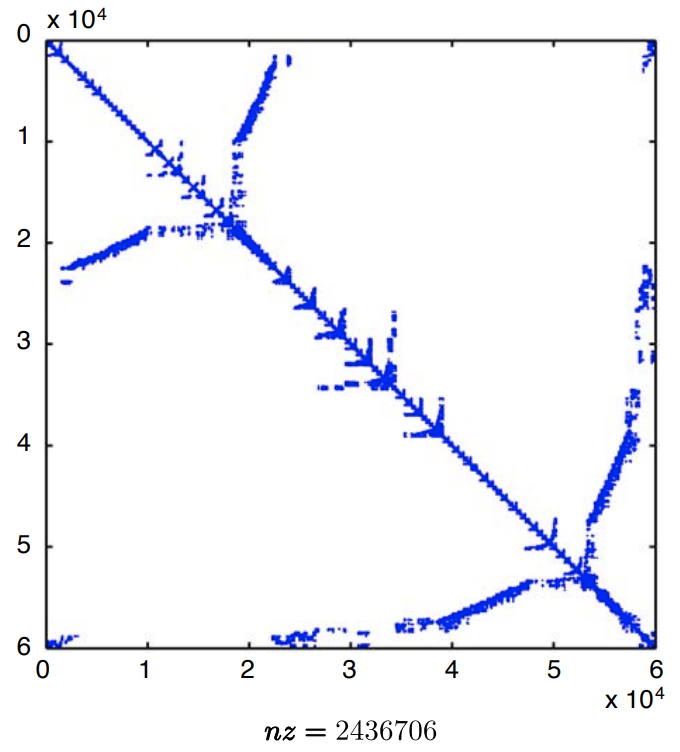24.3: Outline
( \newcommand{\kernel}{\mathrm{null}\,}\)
In this unit we first consider the well-posedness of linear systems: n equations in n unknowns. We understand the conditions under which a solution exists and is unique, and we motivate - from a physical perspective - the situations in which a solution might not exist or might exist but not be
3 For our particular problem it is best to permute the unknowns and equations in the same fashion to preserve symmetry of K.

unique.
We next consider the basic Gaussian eliminate algorithm. We then proceed to Gaussian elimination for sparse systems - motivated by the example and numerical results presented above for the robot arm. Finally, we consider the MATLAB implementation of these approaches. (Note that all results in this chapter are based on MATLAB implementations.)
We notably omit several important topics: we do not consider iterative solution procedures; we do not consider, except for a few remarks, the issue of numerical stability and conditioning.

